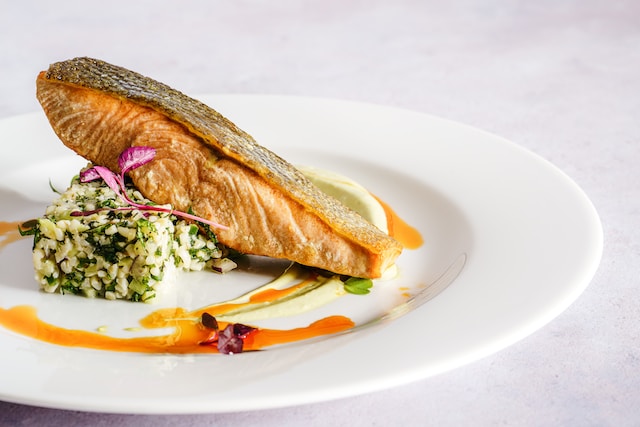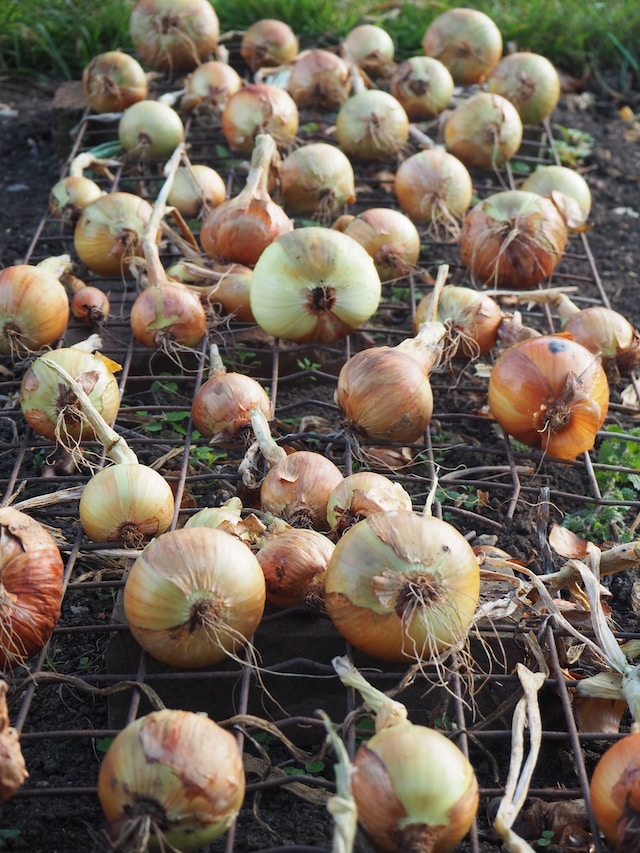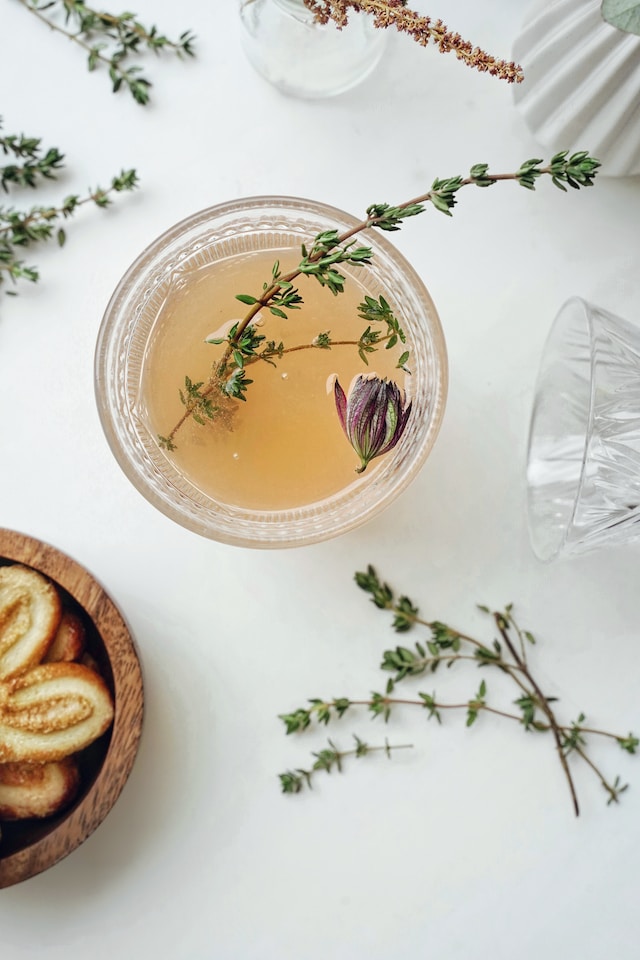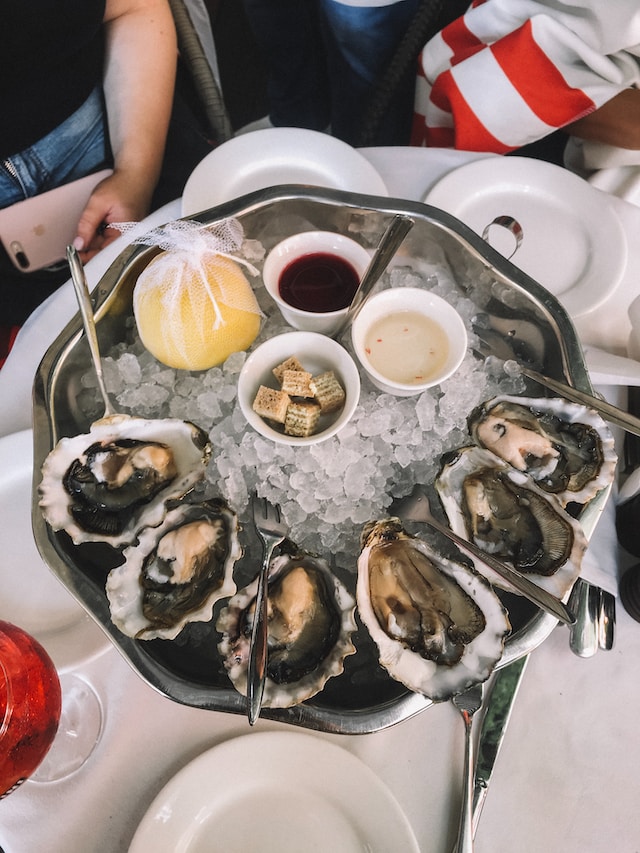
Few cuisines can rival the elegance and sophistication of French cuisine. Renowned for its exquisite flavors, meticulous techniques, and unparalleled artistry, French cuisine has captured the hearts and palates of food enthusiasts around the world.
At the core of this culinary tradition lies a harmonious combination of key ingredients, carefully selected to create masterpieces that evoke an array of sensory delights. From the bustling kitchens of Paris to the tranquil countryside of Provence, the culinary landscape of France is a symphony of flavors and textures, painted with passion and precision.
From the pungent herbs of Provence to the rich cream of Normandy, we will delve into the secrets that make French dishes legendary, revealing the artistry behind each ingredient and its significance in creating memorable culinary experiences.
Whether you are a connoisseur of cuisine or an adventurous home cook seeking to recreate the magic of French flavors, this exploration of key ingredients will be a feast for your senses.
Foundational Ingredients
The foundation of French cuisine lies in a carefully curated selection of ingredients. These culinary pillars form the backbone of countless classic French dishes, providing depth, flavor, and character. From the humble onion to the versatile butter, each ingredient has its own unique role to play, contributing to the harmonious symphony of flavors that define French cuisine.
Onion
The humble onion holds a special place in French cuisine, bringing sweet, savory, and earthy notes to dishes. Varieties like shallots, white onion, and red onion add complexity and depth to sauces, stews, and soups. Caramelized onions lend a rich sweetness to French onion soup, while finely chopped onions form the base of mirepoix, the essential flavor profile of countless French recipes.

Butter
Butter is the crown jewel of French cuisine, heralded for its luxurious texture and unmatched richness. From beurre blanc to croissants, butter is the key ingredient that imparts a velvety smoothness and enhances the flavors of both savory and sweet dishes. Clarified butter, known as beurre noisette, adds a nutty aroma and rich taste to sauces, seafood, and sautéed vegetables.
Garlic
Garlic, with its pungent and unmistakable aroma, serves as the flavor enhancer in French dishes. It can be used generously in sauces, marinades, and dressings, infusing them with its distinct character. Roasted garlic adds sweetness and depth to roasted meats, while raw garlic enhances the freshness of aioli and other herb-infused spreads.
Fresh Herbs: Aromatic Accents
Fresh herbs like parsley, thyme, rosemary, and tarragon are the aromatic accents that elevate French dishes. These herbs provide a burst of freshness, lending their unique flavors to sauces, marinades, and vinaigrettes. The classic herb mixture, fines herbes, comprising parsley, chives, chervil, and tarragon, adds a vibrant touch to omelets and delicate seafood dishes.
Baguette
A symbol of French gastronomy, the baguette is an essential part of French meals, whether as an accompaniment or as a vehicle for ingredients. With its crispy exterior and soft interior, the baguette provides the perfect canvas for French sandwiches, crostini, and tartines. Breaking a warm, crusty baguette at the table is a cherished ritual that embodies the convivial spirit of French dining.
Aromatics and Herbs
In French cuisine, the art of flavor is taken to new heights with the strategic use of aromatics and herbs. These aromatic accents add depth, complexity, and a tantalizing fragrance to dishes, transforming simple ingredients into culinary masterpieces. Let’s explore some key aromatics and herbs that are essential in French cooking:
- Shallots
Shallots, with their delicate flavor and hint of sweetness, are a staple in French cuisine. Finely chopped shallots are often sautéed in butter or oil to create a flavor base for sauces, vinaigrettes, and braises. Their subtle onion-like taste enhances the overall dish without overpowering other flavors.

- Thyme
Thyme, with its earthy and slightly floral notes, is one of the most widely used herbs in French cooking. This versatile herb pairs well with poultry, fish, and vegetables, infusing them with a warm and savory essence. Whether used fresh or dried, thyme adds depth and complexity to stews, soups, and marinades.
- Tarragon
Tarragon, with its distinct anise-like flavor and aroma, brings a touch of elegance to French cuisine. This herb is often used in classic French sauces like Béarnaise and in a variety of seafood dishes. Its bright and slightly bittersweet taste adds a refreshing dimension to both savory and sweet creations.
- Bay Leaf
Bay leaf, with its subtle and herbal fragrance, is a key ingredient in many French recipes. It is commonly added to long-simmering dishes like stews, stocks, and braises, infusing them with a delicate and slightly floral aroma. The bay leaf imparts a gentle undertone that enhances the overall flavor profile of the dish.
- Parsley
Parsley, with its vibrant green color and clean, grassy taste, is used as both a garnish and a flavor enhancer in French cuisine. Chopped parsley adds a burst of freshness to salads, soups, and sauces. It is also a key ingredient in the classic herb mixture, fines herbes, which is used to season delicate dishes like omelets and seafood.
- Chives
Chives, with their delicate onion flavor and bright green color, are often used as a garnish or a finishing touch in French dishes. They add a subtle hint of onion flavor without overpowering the dish. Chives are best enjoyed fresh and sprinkled over creamy soups, scrambled eggs, or steamed vegetables.
Seafood Splendor
France, with its diverse coastlines and bountiful rivers, is a paradise for seafood lovers. The French have mastered the art of showcasing the delicate flavors of seafood, elevating it to new heights of gastronomic excellence. From the briny depths of the sea to the tranquil waters of the rivers, the treasures harvested from these waters find their way into French kitchens, where they are transformed into exquisite dishes that celebrate the natural flavors of the sea.
Oysters
Oysters hold a special place in French seafood cuisine, prized for their briny-sweet taste and smooth texture. Whether enjoyed fresh with a squeeze of lemon or cooked in delicate sauces, oysters are a culinary delight. The coastal regions of Brittany and Normandy are renowned for their oyster production, with varieties like the Belon and Gillardeau oysters commanding the utmost respect. Crisp and bracing, oysters bring an oceanic essence to French dishes, symbolizing the very essence of luxury and indulgence.

- Belon Oysters: Hailing from the Belon River estuary in Brittany, these oysters boast a distinctive coppery flavor that sets them apart. With their plump meat and bracingly salty taste, Belon oysters are a delight for true oyster aficionados.
- Gillardeau Oysters: Cultivated in the Marennes-Oléron region of western France, Gillardeau oysters are known for their delicate balance of sweetness and salinity. With their tender, ivory-colored flesh and rich, buttery flavor, Gillardeau oysters are a coveted delicacy.
Lobster
Lobster, with its succulent flesh and luxurious taste, reigns as the king of crustaceans in French cuisine. Whether poached, grilled, or added to rich sauces, lobster adds a touch of opulence to any dish. The coastal regions of Brittany and Normandy are home to some of the finest lobsters, where they are caught in cold, nutrient-rich waters, ensuring their unrivaled flavor and texture.
- Brittany Lobster: Known as the Homard Breton, the lobsters from Brittany are prized for their firm, flavorful meat. Often showcased in classic dishes like Lobster Bisque or simply steamed and served with melted butter, Brittany lobsters are a true delicacy.
- Canadian Lobster: While not native to France, Canadian lobsters have become a sought-after ingredient in French seafood cuisine. Their sweet, delicate meat and large claws make them ideal for grilling or incorporating into rich seafood stews like Bouillabaisse.
Mussels
Mussels, with their plump, tender meat and bracing marine flavor, are a favorite seafood ingredient in France. These gems of the coast find their way into an array of dishes, from simple Moules Marinières to complex seafood paellas. The coastal regions of Brittany and Normandy produce some of the finest mussels, thanks to their pristine waters and nutrient-rich environment.
- Bouchot Mussels: Bouchot mussels, cultivated along the rocky coasts of Normandy and Brittany, are prized for their exceptional flavor and meaty texture. Grown on wooden posts, these mussels develop a unique flavor profile, balancing sweetness and salinity. Whether steamed, baked, or added to pasta dishes, Bouchot mussels are a true delight.
- Mediterranean Mussels: Found along the southern coast of France, Mediterranean mussels offer a smaller, more delicate meat. These mussels are often enjoyed simply steamed with white wine, garlic, and fresh herbs, allowing their natural brininess to shine through.
Poultry and Game
In the realm of French cuisine, poultry and game play a prominent role, adding rustic flavors and delicate delights to the culinary landscape. From succulent roast chicken to tender quail, these ingredients are celebrated for their versatility and exquisite taste. The French have mastered the art of showcasing the natural flavors of poultry and game, taking simple ingredients and transforming them into gastronomic marvels.

Chicken
Chicken, with its tender meat and mild flavor, is a staple ingredient in French cooking. From the humble Coq au Vin to the iconic Poulet Roti, these classic dishes showcase the versatility of chicken—whether it’s braised, roasted, or simmered in a fragrant sauce. The French take great care in selecting high-quality free-range or farm-raised chickens, ensuring the best flavor and texture.
Coq au Vin: This beloved French dish features chicken braised in red wine, bacon, and mushrooms, resulting in a rich and hearty stew. The long, slow cooking process allows the flavors to meld together, creating a dish that embodies the essence of French comfort food.
Poulet Roti: A simple yet elegant preparation, Poulet Roti showcases the natural flavors of chicken. The whole bird is roasted to perfection, seasoned with herbs and basted with butter, resulting in crispy golden skin and succulent meat. It is often served with roasted potatoes and a side of jus.
Duck
Duck, with its rich, distinctive flavor, is a gourmet delight in French cuisine. From succulent Duck Confit to the delectable Duck à l’Orange, this game bird has a special place on French menus. The French art of cooking duck is a balance between rendering the fat for crisp skin and keeping the meat tender and moist.
Duck Confit: The epitome of slow-cooked goodness, Duck Confit is made by curing duck legs in salt and spices, then slow-cooking them in duck fat until tender. The result is meltingly tender meat with crispy skin. It is often served with potatoes, sautéed greens, and a drizzle of the reduced cooking juices.
Duck à l’Orange: This classic French dish combines the richness of duck with the tangy sweetness of oranges. The duck is first seared to render the fat and then roasted to perfection. It is served with an orange-infused sauce, creating a harmonious balance of flavors that is both tantalizing and sophisticated.
Quail
Quail, with its small size and delicate meat, is synonymous with elegance in French cuisine. These petite game birds offer tender, flavorful meat with a hint of gaminess that adds depth to any dish. Quail is often associated with gourmet French restaurants, where it is lovingly prepared to showcase its delicate flavors.
- Quail Rôti: A simple preparation where the quail is roasted with garlic, thyme, and butter, resulting in a dish that is both tender and flavorful. The crispy skin, fragrant herbs, and succulent meat create a culinary experience that is both rustic and refined.
- Quail with Grapes: A dish that highlights the balance of sweet and savory flavors, quail with grapes combines the richness of the bird with the sweetness of fresh grapes. The quail is often pan-seared to develop a golden crust, then finished in the oven, and served with a rich grape sauce made from the pan drippings.
French cuisine is a masterpiece of flavors, techniques, and artistry, with each ingredient playing a crucial role in creating extraordinary dishes. Whether you are embarking on a culinary adventure or simply seeking to appreciate the artistry behind French cuisine, these key ingredients will transport you to the heart of this culinary tradition. Bon appétit!
